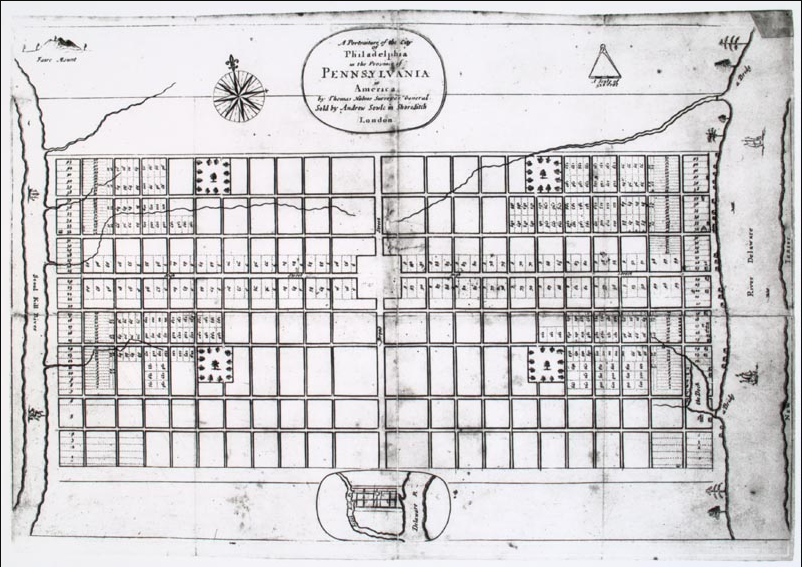Philadelphia, PENN and HOLME, Enlightenment, PHILADELPHIA, PA, 1682 AD

Image 1: plan of Philadelphia
Philadelphia is an interesting joint venture between politics and business. Entrepreneurs William Penn, governor of Pennsylvania and Thomas Holme, a British businessman joined efforts to create an orderly and organized urban environment featuring public areas. The plan would facilitate growth in the one mile stretch between the Schuylkill and Delaware Rivers. Between the rivers are two perpendicular monumental axes reminiscent of the Classical Roman precedents of CARDO and DECUMANUS. In Philadelphia, the north-south axis is Broad Street and the east-west axis is Market Street connecting from Delaware to Schuylkill River. These two axes spread into a rational, mathematical grid organization. Featured in each quadrant split by the axes is a GREEN. A unique quality of the greens in the US is their integration of vegetation and landscape into the city. In many European urban precedents, figural voided spaces (FORUM or PIAZZA) are hardscapes connecting a greater architectural density in the heart of a city. In the US, inserting landscape into the city harkens back to our agrarian roots and connection to the pastoral countryside. These select nodes of green spots within the city create a hierarchy within the urban plan focusing on unique buildings within their proximity.
The plan was successful and has developed into the contemporary city of Philadelphia. Cities grow and change. In the early 1900s, a diagonal axis cut from City Hall through Logan Square to the Philadelphia Museum of Art, further expanding and creating new organizations for the city. Many other cities feature greens such as SAVANNAH or major perpendicular axes such as COLUMBUS, Ohio.
Media Attributions
- Plan of Philadelphia is licensed under a Public Domain license
figural void in a US town plan
figural void (lack of mass) in an urban context in a Classical Roman city, plural is for a
A figural void in an urban context, defined by multiple buildings. The name piazza is generalized to Italian urban context and during and after the Renaissance. A piazza is similar to a forum or agora, but these terms relate to Classical Roman and Classical Greek cultures respectively.
